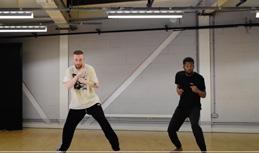
11 minute read
IDENTITY – DANCE AND MOVEMENT
• This could be all together in the space – filling the training room! • In small groups while others watch and notice what you have made – giving peer feedback. • In pairs, one performing, one observing giving feedback and support to each other.
REFLECTION
Advertisement
What type of feedback will be constructive for the dancers? Some suggested questions to direct useful feedback are; • Can you notice any interesting ways the boxing actions have been included? Why is it interesting? • Do the dynamic changes make the theme of boxing clear? Does any slow-motion work in the dance? • What can you say about the way they are performing? Do you believe they are in training?
How does their focus and their body presence tell you that?
TASK 2
MAKE A GROUP UNISON PHRASE TO SHOW CONFORMITY.
Take one action from everyone’s solo and link it together into a new phrase. Everyone performs this in unison – all dancers performing the same movement at the same time. (This can be done in groups of 5+ with the dancers creating the response, or as a whole class with the teacher leading the choreography.)
You could also begin with this as set material to model the dance idea. Use our video of the phrase we created to help you. Perform this as many times as you choose. The more you repeat, the greater feeling of unity and conformity will be communicated to your audience.
FOLLOW UP
ASK THE QUESTIONS “IN WHAT WAYS COULD YOU NOW SHOW SOMEONE BEGINNING TO BE AN INDIVIDUAL, TO BREAK FREE?”
Here are some suggestions; • Repeat the unison phrase 5 times and in repeat 3, 4 and 5 someone begins to break away – they could go at a different timing, they could pause and look at everyone else, they could back away/remove themselves from the group. Try some of these ideas and choose which you think is most effective. • Create a group shape with everyone connected at the end of your unison phrase (you could use a still boxing image) and one individual escapes. Escape through the body parts, go over or under to add interest. The rest of the group catches the person up and brings them back into the group creating a new image. You may think about moving the escaped person into the body shape you want them to be in. Make them fit into the group. You could keep the same person escaping the group or change to different people to show that everyone sometimes wants the confidence to be an individual. When you escape, what body shape do you do until the group catches you up? Could it be related to something you are interested in (for example, Billy wanted to do ballet). Think about how all the dancers respond to each other, how do they use looking to communicate the meaning (focus), how and at what speed do they travel to a new place to show intention to the idea of trying to make Billy fit in.
TASK 3
WORKING AS A DUET – FITTING IN AND BREAKING FREE.
In this task you can refer to and use the boxing actions as still images or the young people can decide on their own ideas of what they do to conform and create still images related to that.
EXPLORE THE IDEA OF ‘PUPPETS’ – ONE DANCER IS THE PUPPET THE OTHER IS THE CONTROLLER.
Controller sculpts the puppet into a still shape (to show they are conforming): puppet allows them to do this; repeat this for three times each into a different shape. During this phase, movement should have more fluidity. Repeat this again but this time the puppet creates some resistance as they get sculpted into the shape and then moves their body out of it before the next shape is sculpted. During this phase, this movement will have more tension. Repeat again and this time the puppet escapes the shape by moving to a new space, using any travelling action of their choice. The controller must move to them to sculpt the puppet again. This phrase will have a mixture of tension and fluidity and freedom as the puppet escapes. It will travel around more. Consider how the puppet and controller can use the space around each other and in the room to add interest. What is the resolution? Allow the dancers to decide what happens in the end. Is there acceptance that the puppet can now be an individual? Does the controller accept or deny this and how might you show this in a final moment / an ending position or phrase? If you want a more upbeat and fun element to this duet you could use the song from the musical Express Yourself which is sung by Billy and Michael. This would create a very different energy to explore.
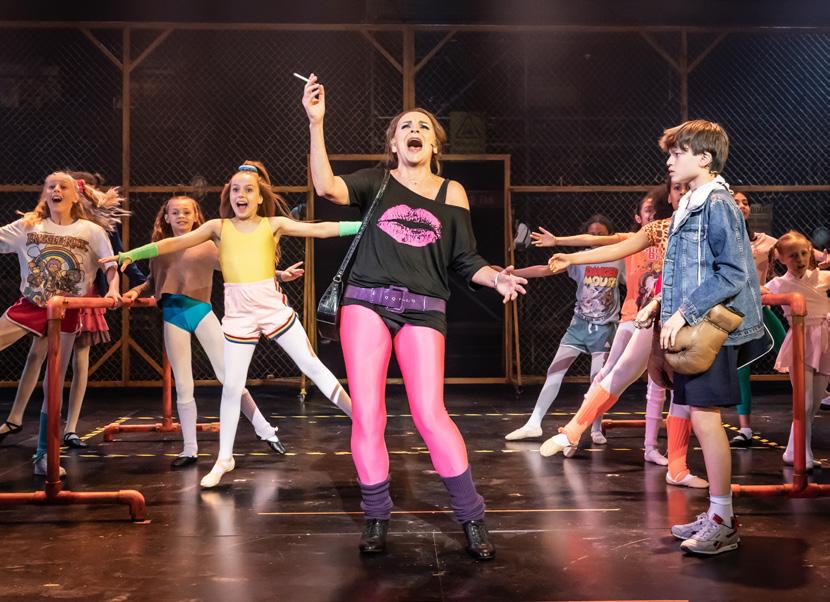
FAMILY AND BEREAVEMENT – DRAMA
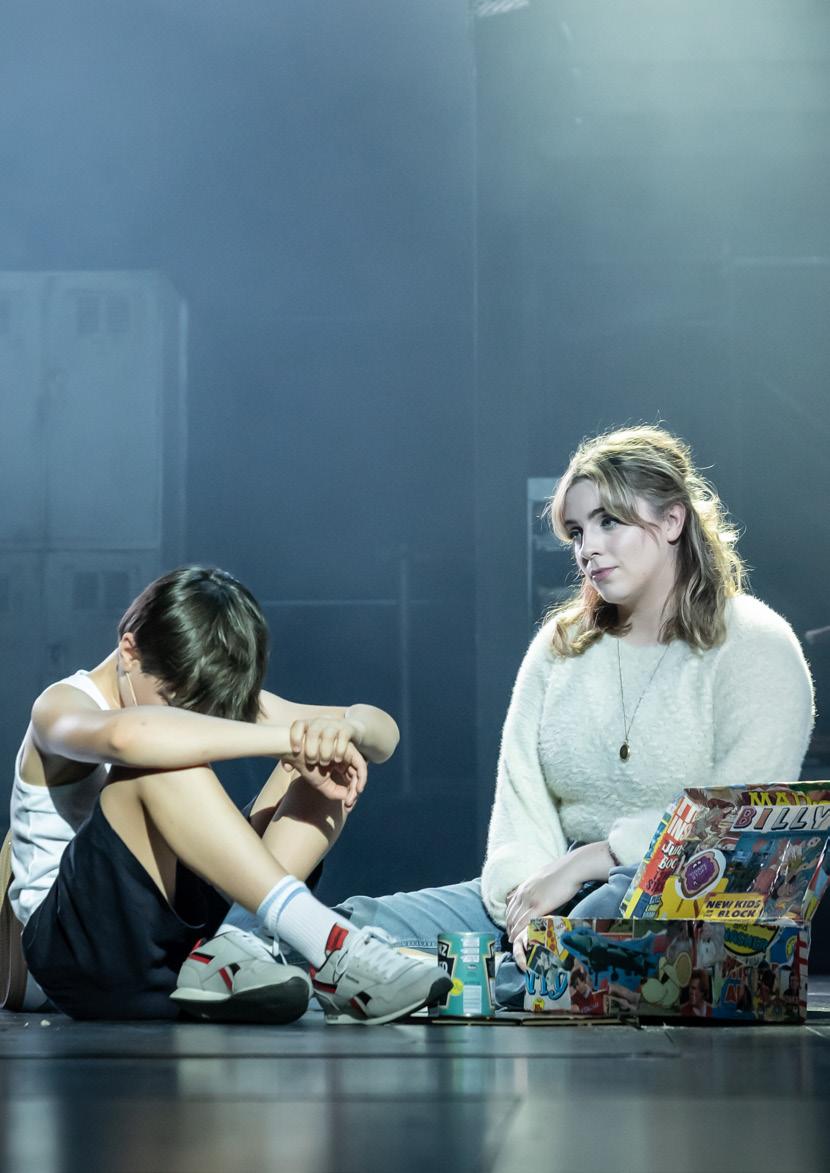
CONTEXT
THE IMPACT OF LOSING A PARENT
In the 1980s, a large amount of people believed that there should be gendered separation of roles and jobs, with the man in the ‘breadwinner’ role, going to work and bringing home the money, and the woman in a caring role. A study taken by British Social Attitudes showed that this was supported by almost 50% of people in 1984. This meant that for most women their daily life would centre around caring for her children, keeping up the house and supporting her husband. Anything away from this norm was still considered odd and other, especially if the woman had children. In mining villages, women were seen as the silent backbone of the community, keeping life moving forward while the men were working shift hours. The Elliot family sits outside of this norm, Billy’s mother passed away during his childhood. Billy uses dance to help process his grief, by taking inspiration from a letter his mother wrote to him for when he turns 18, to choreograph his audition for the Royal Ballet. In the letter, Billy’s mother says “I was with you through everything. And please, Billy, know that I will always be proud to have known you.” This letter is particularly poignant at this moment in the story, as Billy feels uncertain about his uptake in dance, and the letter not only allows Billy to feel connected to him mother, but also that she would support his endeavours.
ACTIVITIES TASK 1
STARTER – WARM UP GAME – FAMILY AND FRIENDS GIFTS
This warm-up game is an improvisation game where learners work as a whole group to continuously improvise with one another. Ask the group to stand in a circle and select one learner to start the game by walking across the circle and mime giving a gift to a person of their choice, while saying “I got this for you, *family member*”. They can choose to say any family member they wish, grandmother, brother, aunt, bestie, any relation they choose. When they give the gift, the recipient can improvise, both the character they are receiving the gift and what the gift itself is. This can be very serious, or humours dependant on the age group and stimulus learners are given before beginning. Encourage the learners to embody characteristics of that family member, how they would interact with their family member and what would be their dynamic when communicating.
TASK 2
CREATIVE MONOLOGUE WRITING
Below is an extract from the script, where Billy is sharing the letter from his mother with Mrs Wilkinson. Encourage learners to take some time reading and annotating the dialogue and lyrics with their thoughts and feedback. If a starting point is needed, encourage them to specifically focusing on the seemingly everyday actions and feelings that are highlighted. MRS WILKINSON Dear Billy, I must seem a distant memory... BILLY Which is... MRS WILKINSON Which is probably a good thing. And it will have been a long... BILLY Long time. AND I WILL HAVE MISSED YOU GROWING, AND I’LL HAVE MISSED YOU CRYING... AND I’LL HAVE MISSED YOUR LAUGH. MISSED YOUR STOMPING AND YOUR SHOUTING, I’LL HAVE MISSED TELLING YOU OFF, BUT, PLEASE, BILLY, KNOW THAT I WAS ALWAYS THERE. I WAS WITH YOU THROUGH EVERYTHING. AND PLEASE, BILLY... MRS WILKINSON KNOW THAT I WILL ALWAYS BE PROUD TO HAVE KNOWN YOU. PROUD THAT YOU WERE MINE, PROUD IN EVERYTHING.
Set the learners the task of writing a letter to a friend relative or carer that will be read in 10 years’ time. This could be to a parent, carer, grandparent, sibling, a friend or someone else of their choosing. Ask them to address things they hope that themselves and the letter recipient will have achieved during this time, but also to juxtapose this with day-to-day actions and feelings that stand out to them. An example may be; “Dear Grandad, I hope by now I am a qualified vet, I must have been able to perfect your macaroni cheese recipe by now!” Once learners have written their letters, ask them to practice reading the letter allowed in the style of a monologue. You may encourage them to think about speed, dynamic, internation, emotion and pause / breath while practicing. Offer the opportunity to perform monologues back, either in pairs or in front of the group.

REFLECTION
ASK LEARNERS TO FEEDBACK TO ONE ANOTHER ON THEIR LETTER MONOLOGUES.
Ask them to make one performative suggestion that changes the intention of a sentence, an example could be to add an inflection to a sentence to change the meaning. “I must have been able to perfect your macaroni cheese recipe by now?” Ask the learner to self-evaluate also, good prompt questions to ask include; • What did you learn about this relationship by writing to this person? • Did the intention of the letter change between writing it and performing it allowed? • Do you feel you were able to convey your connection with the individual through a letter? • What other creative outlets could you use to explore the text you devised? (i.e. poetry, dance, song)
FOLLOW UP
An extension or alternate activity could be suggesting the learners write a letter to their future self instead of a friend, relative or carer. Within this, they can add even more dynamic and personable ideas, for example “you better not still be listening to the same 3 songs” or “did you ever tell anyone about who really broke Mrs Smith’s favourite mug?”. When learners perform this as a monologue, playing with the humour of the dialogue and dramatic pause can be interesting to change the intention of the letter.
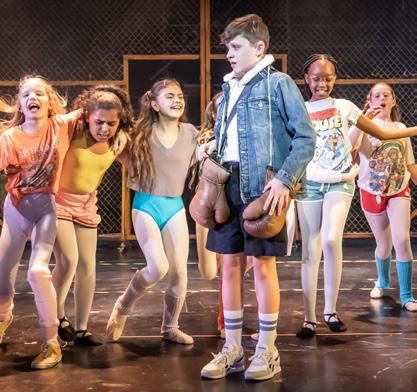



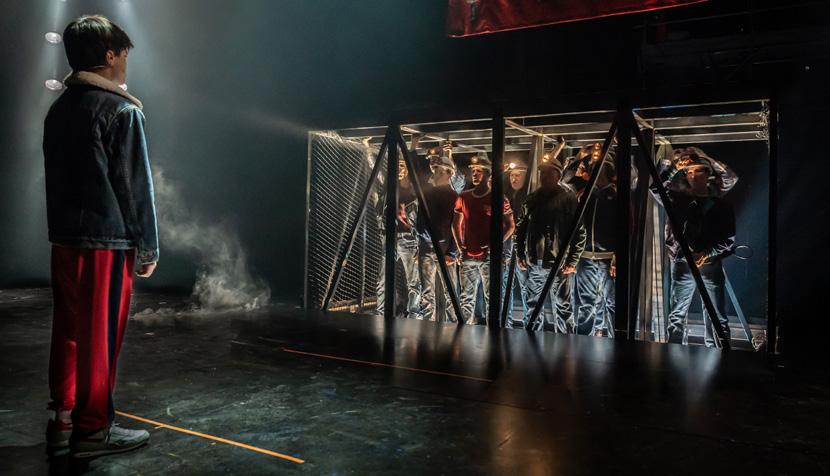
CREATIVITY – DRAMA

CONTEXT
FROM INDUSTRIAL TOWNS TO CREATIVE INDUSTRIES
Careers in the creative industries have become much more common, and our idea of how we can earn a living from creativity has changed since the acceleration of the internet. In 1984 when Billy Elliot The Musical is set, the idea of earning money as a social media influencer would’ve been an alien concept. Other factors to consider are that it was only in 1970 that the Equal Pay Act was passed, which prohibited any less favourable treatment between women and men in terms of pay and conditions of employment. This was followed in 1975 by the Sex Discrimination Act which protected both men and women from discrimination on the grounds of sex or marital status in employment, training, and education. Prior to this, women who did work were only paid two-thirds of what men were being paid for the same job. Within towns such as Easington, where the story of Billy Elliot The Musical is set, industrialisation had a significant impact on the career pathways for people living there. Easington began to expand when the coal mine was sunk near the original village. This caused a larger settlement to develop around the colliery as thousands of people moved from all over Britain for work. Boys growing up in Easington, and similar towns, where expected to follow in the footsteps of their families, and when old enough learn to work in the mines. This was the case for Billy, whose father and brother both worked in the mines, and went against the norm to pursue his chosen career rather than what was expected of him. Billy’s decision to follow his dreams to be a ballet dancer meant that he was changing the landscape of career pathways, and almost four decades later, the creative industries contributed over 115 billion pounds to the UK economy in 2019. As a growth industry, it is worth exploring.
ACTIVITIES TASK 1
CREATIVE ROLES
Ask learners to list jobs where the ability to be creative is essential, from the list work together to describe what creativity is in practical terms. How do you monetise it? How do you measure it? What is important? Imagination? Innovation? Constructing content/ideas? Influencing change?
TASK 2
HOW DO YOU EARN A LIVING FROM CREATIVITY?
At the theatre, there are many roles that go unseen that all require creativity. Click on the links below to open up a PDF for each role. You could work in four groups and ask each group to look at one of them and then share back. Ask learners to read through each one and consider: 1 – What other skills does the role require apart from creativity? 2 – Why did this person decide to do this job? 3 – What are the benefits of the job? What do they enjoy about it?


